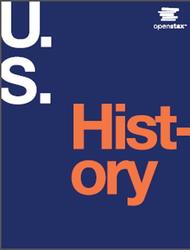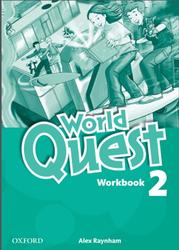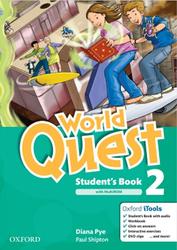Welcome to U.S. History, an OpenStax resource. This textbook was written to increase student access to high-quality learning materials, maintaining highest standards of academic rigor at little to no cost.

The Americas.
Some scholars believe that between nine and fifteen thousand years ago, a land bridge existed between Asia and North America that we now call Beringia. The first inhabitants of what would be named the Americas migrated across this bridge in search of food. When the glaciers melted, water engulfed Beringia, and the Bering Strait was formed. Later settlers came by boat across the narrow strait. (The fact that Asians and American Indians share genetic markers on a Y chromosome lends credibility to this migration theory.) Continually moving southward, the settlers eventually populated both North and South America, creating unique cultures that ranged from the highly complex and urban Aztec civilization in what is now Mexico City to the woodland tribes of eastern North America. Recent research along the west coast of South America suggests that migrant populations may have traveled down this coast by water as well as by land.
Researchers believe that about ten thousand years ago, humans also began the domestication of plants and animals, adding agriculture as a means of sustenance to hunting and gathering techniques. With this agricultural revolution, and the more abundant and reliable food supplies it brought, populations grew and people were able to develop a more settled way of life, building permanent settlements. Nowhere in the Americas was this more obvious than in Mesoamerica (Figure 1.3).
Contents.
Preface.
Chapter 1: The Americas. Europe, and Africa Before 1492.
1.1.The Americas.
1.2.Europe on the Brink of Change.
1.3.West Africa and the Role of Slavery.
Chapter 2: Early Globalization: The Atlantic World. 1492-1650.
2.1.Portuguese Exploration and Spanish Conquest.
2.2.Religious Upheavals in the Developing Atlantic World.
2.3.Challenges to Spain s Supremacy.
2.4.New Worlds in die Americas: Labor. Commerce, and the Columbian Exchange.
Chapter 3: Creating New Social Orders: Colonial Societies. 1500-1700.
3.1.Spanish Exploration and Colonial Society.
3.2.Colonial Rivalries: Dutch and French Colonial Ambitions.
3.3.English Settlements in America.
3.4.The Impact of Colonization.
Chapter 4: Rule Britannia! The English Empire. 1660-1763.
4.1.Charles II and the Restoration Colonies.
4.2.The Glorious Revolution and the English Empire.
4.3.An Empire of Slavery and the Consumer Revolution.
4.4.Great Awakening and Enlightenment.
4.5.Wars for Empire.
Chapter 5: Imperial Reforms and Colonial Protests. 1763-1774.
5.1.Confronting the National Debt The Aftermath of the French and Indian War.
5.2.The Stamp Act and the Sons and Daughters of Liberty.
5.3.The Townshend Acts and Colonial Protest.
5.4.The Destruction of the Tea and the Coercive Acts.
5.5.Disaffection: The First Continental Congress and American Identity.
Chapter 6: America's War for Independence. 1775-1783.
6.1.Britain's Law-and-Order Strategy and Its Consequences.
6.2.The Early Years of the Revolution.
6.3.War in the South.
6.4.Identity during the American Revolution.
Chapter 7: Creating Republican Governments. 1776-1790.
7.1.Common Sense: From Monarchy to an American Republic.
7.2.How Much Revolutionary Change?.
7.3.Debating Democracy.
7.4.The Constitutional Convention and Federal Constitution.
Chapter 8: Growing Pains: The New Republic. 1790-1820.
8.1.Competing Visions: Federalists and Democratic-Republicans.
8.2.The New American Republic.
8.3.Partisan Politics.
8.4.The United States Goes Back to War.
Chapter 9: Industrial Transformation in the North. 1800-1850.
9.1.Early Industrialization in the Northeast.
9.2.A Vibrant Capitalist Republic.
9.3.On the Move: The Transportation Revolution.
9.4.A New Social Order: Class Divisions.
Chapter 10: Jacksonian Democracy. 1820-1840.
10.1.A New Political Style: From John Quincy Adams to Andrew Jackson.
10.2.The Rise of American Democracy.
10.3.The Nullification Crisis and the Bank War.
10.4.Indian Removal.
10.5.The Tyranny and Triumph of the Majority.
Chapter 11: A Nation on the Move: Westward Expansion. 1800-1860.
11.1.Lewis and Clark.
11.2.The Missouri Crisis.
11.3.Independence for Texas.
11.4.The Mexican-American War. 1846-1848.
11.5.Free Soil or Slave? The Dilemma of the West.
Chapter 12: Cotton is King: The Antebellum South. 1800-1860.
12.1.The Economics of Cotton.
12.2.African Americans in the Antebellum United States.
12.3.Wealth and Culture in the South.
12.4.The Filibuster and the Quest for New Slave States.
Chapter 13: Antebellum Idealism and Reform Impulses. 1820-1860.
13.1.An Awakening of Religion and Individualism.
13.2.Antebellum Communal Experiments.
13.3.Reforms to Human Health.
13.4.Addressing Slavery.
13.5.Women's Rights.
Chapter 14: Troubled Times: the Tumultuous 1850.
14.1.The Compromise of 1850.
14.2.The Кansas-Nebraska Act and the Republican Party.
14.3.The Dred Scott Decision and Sectional Strife.
14.4.John Brown and the Election of 1860.
Chapter 15: The Civil War. 1860-1865.
15.1.The Origins and Cutbreak of the Civil War.
15.2.Early Mobilization and War.
15.3.1863: The Changing Nature of the War.
15.4.The Union Triumphant.
Chapter 16: The Era of Reconstruction. 1865-1877.
16.1.Restoring the Union.
16.2.Congress and the Remaking of the South. 1865-1866.
16.3.Radical Reconstruction. 1867-1872.
16.4.The Collapse of Reconstruction.
Chapter 17: Go West Young Man! Westward Expansion. 1840-1900.
17.1.The Westward Spirit.
17.2.Homesteading: Dreams and Realities.
17.3.Making a Living in Gold and Cattle.
17.4.The Loss of American Indian Life and Culture.
17.5.The Impact of Expansion on Chinese Immigrants and Hispanic Citizens.
Chapter 18: Industrialization and the Rise of Big Business. 1870-1900.
18.1.Inventors of the Age.
18.2.From Invention to Industrial Growth.
18.3.Building Industrial America on the Backs of Labor.
18.4.A New American Consumer Culture.
Chapter 19: The Growing Pains of Urbanization. 1870-1900.
19.1.Urbanization and Its Challenges.
19.2.The African American "Great Migration" and New European Immigration.
19.3.Relief from the Chaos of Urban Life.
19.4.Change Reflected in Thought and Writing.
Chapter 20: Politics in the Gilded Age. 1870-1900.
20.1.Political Corruption in Postbellum America.
20.2.The Key Political Issues: Patronage. Tariffs, and Gold.
20.3.Farmers Revolt in the Populist Era.
20.4.Social and Labor Unrest in the 1890s.
Chapter 21: Leading the Way: The Progressive Movement. 1890-1920.
21.1.The Origins of the Progressive Spirit in America.
21.2.Progressivism at the Grassroots Level.
21.3.New Voices for Women and African Americans.
21.4.Progressivism in the White House.
Chapter 22: Age of Empire: American Foreign Policy. 1890-1914.
22.1.Turner. Mahan, and the Roots of Empire.
22.2.The Spanish-American War and Overseas Empire.
22.3.Economic Imperialism in East Asia.
22.4.Roosevelt's "Big Stick' Foreign Policy.
22.5.Taft's "Dollar Diplomacy".
Chapter 23: Americans and the Great War. 1914-1919.
23.1.American Isolationism and the European Origins of War.
23.2.The United States Prepares for War.
23.3.A New Home Front.
23.4.From War to Peace.
23.5.Demobilization and Its Difficult Aftermath.
Chapter 24: The Jazz Age: Redefining the Nation. 1919-1929.
24.1.Prosperity and the Production of Popular Entertainment.
24.2.Transformation and Backlash.
24.3.A New Generation.
24.4.Republican Ascendancy. Politics in the 1920s.
Chapter 25: Brother. Can You Spare a Dime? The Great Depression. 1929-1932.
25.1.The Stock Market Crash of 1929.
25.2.President Hoover's Response.
25.3.The Depths of the Great Depression.
25.4.Assessing the Hoover Years on the Eve of the New Deal.
Chapter 26: Franklin Roosevelt and the New Deal. 1932-1941.
26.1.The Rise of Franklin Roosevelt.
26.2.The First New Deal.
26.3.The Second New Deal.
Chapter 27: Fighting the Good Fight in World War II. 1941-1945.
27.1.The Origins of War: Europe. Asia, and the United States.
27.2.The Home Front.
27.3.Victory in the European Theater.
27.4.The Pacific Theater and the Atomic Bomb.
Chapter 28: Post-War Prosperity and Cold War Fears. 1945-1960.
28.1.The Challenges of Peacetime.
28.2.The Cold War.
28.3.The American Dream.
28.4.Popular Culture and Mass Media.
28.5.The African American Struggle for Civil Rights.
Chapter 29: Contesting Futures: America in the 1960s.
29.1.The Kennedy Promise.
29.2.Lyndon Johnson and the Great Society.
29.3.The Civil Rights Movement Marches On.
29.4.Challenging the Status Quo.
Chapter 30: Political Storms at Home and Abroad. 1968-1980.
30.1.Identity Politics in a Fractured Society.
30.2.Coming Apart, Coming Together.
30.3.Vietnam: The Downward Spiral.
30.4.Watergate: Nixon’s Domestic Nightmare.
30.5.Jimmy Carter in the Aftermath of the Storm.
Chapter 31: From Cold War to Culture Wars, 1980-2000.
31.1.The Reagan Revolution.
31.2.Political and Cultural Fusions.
31.3.A New World Order.
31.4.Bill Clinton and the New Economy.
Chapter 32: The Challenges of the Twenty-First Century.
32.1.The War on Terror.
32.2.The Domestic Mission.
32.3.New Century, Old Disputes.
32.4.Hope and Change.
Appendix A: The Declaration of Independence.
Appendix B: The Constitution of the United States.
Appendix C: Presidents of the United States of America.
Appendix D: U.S. Political Map.
Appendix E: U.S. Topographical Map.
Appendix F: United States Population Chart.
Appendix G: Further Reading.
Index.
Бесплатно скачать электронную книгу в удобном формате, смотреть и читать:
Скачать книгу U.S. History, Ventura College, Volker Janssen, 2017 - fileskachat.com, быстрое и бесплатное скачивание.
Скачать pdf
Ниже можно купить эту книгу, если она есть в продаже, и похожие книги по лучшей цене со скидкой с доставкой по всей России.Купить книги
Скачать - pdf - Яндекс.Диск.
Дата публикации:
Теги: учебник по английскому языку :: английский язык :: Ventura College :: Volker Janssen
Смотрите также учебники, книги и учебные материалы:
Следующие учебники и книги:
 Английский без боли для начинающих, Штрауссер Д., 2019 — Не волнуйтесь, больно не будет! Английский без боли для начинающих превратит скучные занятия в веселый и безболезненный процесс. Эта книга … Книги по английскому языку
Английский без боли для начинающих, Штрауссер Д., 2019 — Не волнуйтесь, больно не будет! Английский без боли для начинающих превратит скучные занятия в веселый и безболезненный процесс. Эта книга … Книги по английскому языку Английская грамматика для школьников, книга 4, Смирнова А.И., 1997 — Это четвертая книга в комплекте Английская грамматика , включающем все разделы грамматики в объеме школьной программы. Первые две книги вышли … Книги по английскому языку
Английская грамматика для школьников, книга 4, Смирнова А.И., 1997 — Это четвертая книга в комплекте Английская грамматика , включающем все разделы грамматики в объеме школьной программы. Первые две книги вышли … Книги по английскому языку Interactive, Teacher’s Book 4, Holcomb G., Hadkins H., Lewis S., Budden J. — Welcome to Interactive, a course designed to maximise your students’ communication in real, effective English. Interactive by name. Interactive by … Книги по английскому языку
Interactive, Teacher’s Book 4, Holcomb G., Hadkins H., Lewis S., Budden J. — Welcome to Interactive, a course designed to maximise your students’ communication in real, effective English. Interactive by name. Interactive by … Книги по английскому языку World, quest 2, Workbook, Raynham A. — MORE FUN for students with the best-ever stories, songs and activities for learning English. MORE SUPPORT for teachers with ready-to-use … Книги по английскому языку
World, quest 2, Workbook, Raynham A. — MORE FUN for students with the best-ever stories, songs and activities for learning English. MORE SUPPORT for teachers with ready-to-use … Книги по английскому языку
Предыдущие статьи:
 The Oxford Illustrated History of Science, Iwan Rhys Morus, 2017 — The first book in the history and philosophy of science that I can remember reading as an undergraduate thirty years … Книги по английскому языку
The Oxford Illustrated History of Science, Iwan Rhys Morus, 2017 — The first book in the history and philosophy of science that I can remember reading as an undergraduate thirty years … Книги по английскому языку World quest 2, Student’s book, Pye D., Shipton P. — World quest 2, Student s book, Pye D., Shipton P. Фрагмент из книги: Thanksgiving Day is celebrated every year in … Книги по английскому языку
World quest 2, Student’s book, Pye D., Shipton P. — World quest 2, Student s book, Pye D., Shipton P. Фрагмент из книги: Thanksgiving Day is celebrated every year in … Книги по английскому языку Учебник технического перевода, английский язык, Смекаев В.П., 2006 — Учебник технического перевода предлагается для использования на практических занятиях по переводу и для самостоятельной работы студентов. Цель учебника дать студентам … Книги по английскому языку
Учебник технического перевода, английский язык, Смекаев В.П., 2006 — Учебник технического перевода предлагается для использования на практических занятиях по переводу и для самостоятельной работы студентов. Цель учебника дать студентам … Книги по английскому языку Cambridge English, Key for Schools 2, With answers, 2012 — Фрагмент из книги: Children’s Voice began in 2000 as a magazine written by children. It was the idea of a … Книги по английскому языку
Cambridge English, Key for Schools 2, With answers, 2012 — Фрагмент из книги: Children’s Voice began in 2000 as a magazine written by children. It was the idea of a … Книги по английскому языку




